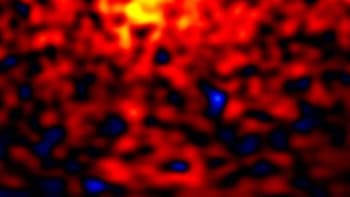
Further doubt has been cast on a claim of experimental evidence for sterile neutrinos – hypothetical particles that could be a component of dark matter. Analysis of data from the MINOS+ experiment reveals no evidence for oscillations involving sterile neutrinos. This contradicts a study published in 2018 by physicists working on the MiniBooNE experiment, which claimed significant evidence for the particles.
The Standard Model of particle physics describes three flavours of neutrinos: electron, muon and tau. As neutrinos travel through space, they oscillate from one flavour to another – something that can be measured by placing a neutrino detector some distance from a source of neutrinos such as a particle accelerator, nuclear reactor or even the Sun.
One such experiment is MiniBooNE at Fermilab, which measures how many muon neutrinos become electron neutrinos after travelling several hundred metres. In 2018, physicists working on MiniBooNE reported detecting far more electron neutrinos than predicted by the Standard Model. A similar excess was also seen more than 20 years ago in measurements of Liquid Scintillator Neutrino Detector (LSND) at the Los Alamos National Laboratory
This excess could be related to the existence of sterile neutrinos, which are hypothetical particles predicted by some extensions of the Standard Model. Sterile neutrinos would also be involved in the neutrino-oscillation process and would therefore affect how muon neutrinos transform into electron neutrinos.
Difficult to detect
Neutrinos interact very weakly with matter and are therefore very difficult to detect. But sterile neutrinos would be even more elusive because they are expected to interact via gravity alone. This means that physicists are unlikely to detect sterile neutrinos directly but could measure their effect on neutrino oscillations. Discovering sterile neutrinos could have important implications for astrophysics and cosmology because the particles are a potential component of dark matter – a mysterious substance that appears to permeate the universe and interact only via gravity.
When the MiniBooNE physicists announced their findings last year, they combined their results with the LSND data to obtain a statistical significance of 6.1σ for the electron neutrino excess. While this is well above the 5σ that is normally considered a discovery in particle physics, some physicists were not convinced that it was evidence for sterile neutrinos.
Indeed, the conclusion seems to be at odds with several different measurements done at several other neutrino detectors worldwide – which reveal no evidence for sterile neutrinos. Furthermore, the properties of sterile neutrinos inferred from MiniBooNE are not compatible with properties of dark matter inferred from cosmological observations. As a result, there is no consensus in the particle physics community about whether evidence for sterile neutrinos has been found.
Latest twist
In this latest twist in the story, physicists searching for evidence of sterile neutrinos in data from Fermilab’s MINOS+ experiment have come up empty handed. MINOS+ ran in 2013-16 and comprised two neutrino detectors – a near detector 1 km away from a neutrino source and a far detector located in a mine 735 km from Fermilab.

Evidence for sterile neutrinos claimed by Fermilab experiment
They were interested in how many muon neutrinos disappeared from the beam as it travels from the source to the detectors. The idea is that if more neutrinos are missing than predicted by the Standard Model, the excess could have oscillated to sterile neutrinos.
However, no such excess has been seen and the new results are incompatible with the MiniBooNE evidence for sterile neutrinos at a statistical confidence of at least 2σ. Writing in Physical Review Letters, the MINOS+ collaboration says that it has yet to study 40% of the data gathered by the experiment and working through those data using improved analysis techniques should boost the sensitivity of their result.
As for the excess seen by MiniBooNE, an optimistic view is that it could point to physics beyond the Standard Model – a result that could be just as exciting as the discovery of sterile neutrinos. A more mundane explanation could be an inaccuracy in how the response of the detector was calculated.



